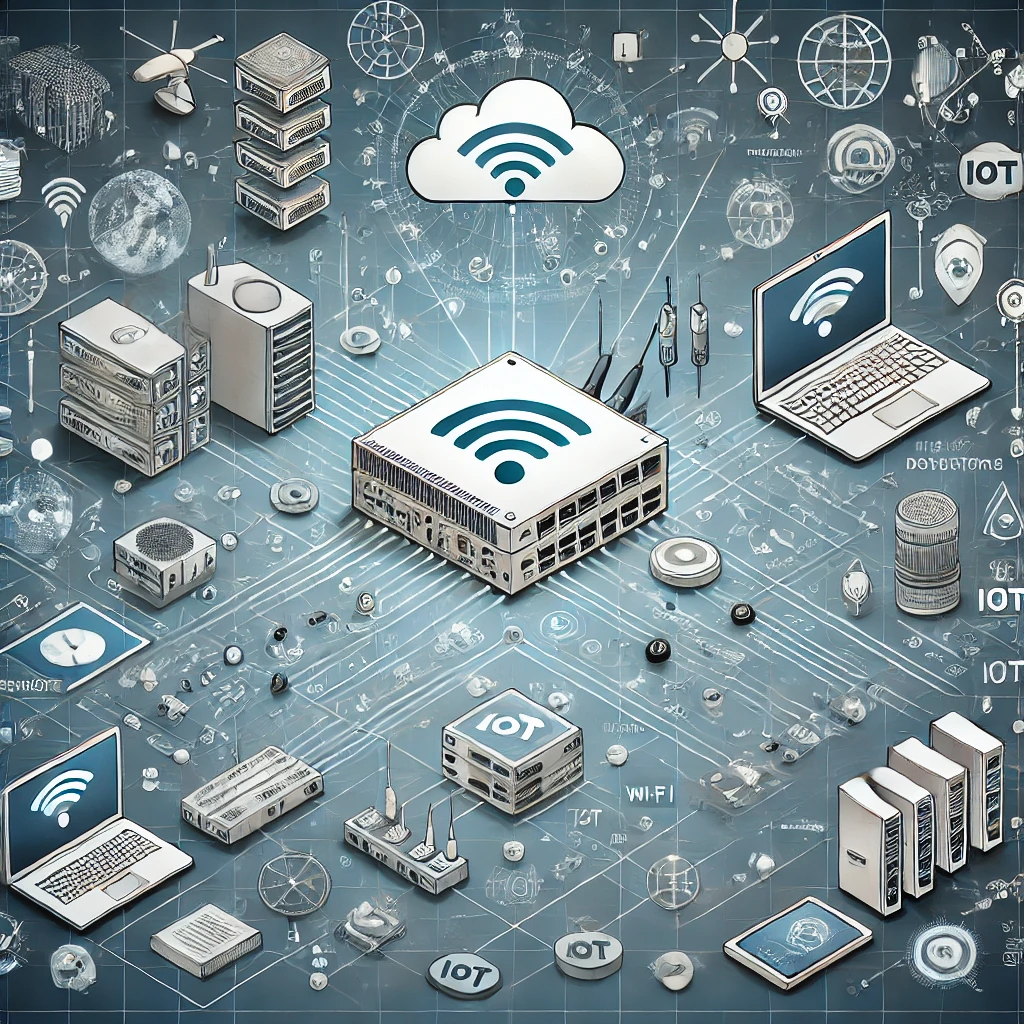Basic Terminologies in Data Communications

Categories:
4 minute read
In today’s interconnected world, data communications form the backbone of our digital infrastructure. Whether you’re a student beginning your journey in IT, a professional looking to expand your knowledge, or simply someone curious about how information travels across networks, understanding the fundamental terminology is crucial. This guide will walk you through the essential concepts and terms used in data communications.
What is Data Communication?
At its core, data communication is the process of exchanging data between two devices through a transmission medium. This exchange can be as simple as sending a text message or as complex as streaming a 4K video. The primary goal is to deliver data accurately, efficiently, and securely from the sender to the intended recipient.
Key Components of Data Communication
- Message
The message is the information to be communicated. It can take various forms:
Text (emails, documents)
Numbers (financial data)
Images (photos, graphics)
Audio (voice calls, music)
Video (streaming content)
Any combination of these types
- Sender and Receiver
Sender: The device that generates and transmits the data
Receiver: The device that accepts and processes the transmitted data These devices can be computers, smartphones, servers, or any other device capable of data transmission and reception.
- Transmission Medium
The physical path through which data travels from sender to receiver. Common types include:
Guided Media
Twisted Pair Cable: Common in Ethernet networks and telephone lines
Coaxial Cable: Used in cable TV and internet services
Fiber Optic Cable: Offers highest speeds and bandwidth for data transmission
Unguided Media
Radio Waves: Used in Wi-Fi and cellular communications
Microwaves: Employed in satellite communications
Infrared: Found in short-range communications like TV remotes
Essential Terminology
Bandwidth
Bandwidth represents the amount of data that can be transmitted through a communication channel in a given time period. It’s typically measured in bits per second (bps) or its larger units:
Kilobits per second (Kbps)
Megabits per second (Mbps)
Gigabits per second (Gbps) Protocol
A protocol is a set of rules governing data communication. Think of it as a language that devices use to communicate with each other. Common protocols include:
TCP/IP (Transmission Control Protocol/Internet Protocol)
HTTP (Hypertext Transfer Protocol)
FTP (File Transfer Protocol)
SMTP (Simple Mail Transfer Protocol) Network Topology
The physical or logical arrangement of devices in a network. Basic topologies include:
Bus: All devices connect to a single cable
Star: Devices connect to a central hub
Ring: Devices form a circular connection
Mesh: Devices interconnect with multiple paths
Hybrid: Combination of two or more topologies Transmission Modes
The direction of data flow between devices:
Simplex
One-way communication
Example: TV broadcasting
Half-Duplex
Two-way communication, but not simultaneous
Example: Walkie-talkies
Full-Duplex
Simultaneous two-way communication
Example: Phone calls Data Encoding
The process of converting data into a format suitable for transmission. Common encoding methods include:
Binary encoding
Manchester encoding
Non-Return to Zero (NRZ)
ASCII encoding
Important Networking Concepts
IP Address
A unique numerical identifier is assigned to each device on a network. Two main versions are in use:
IPv4 (e.g., 192.168.1.1)
IPv6 (e.g., 2001:0db8:85a3:0000:0000:8a2e:0370:7334) MAC Address
A hardware identification number is unique to each network interface card (NIC). It’s permanently assigned by the manufacturer and consists of six pairs of hexadecimal digits.
Packets
Units of data that are routed between an origin and destination. Each packet contains:
Header (source and destination information)
Payload (actual data)
Trailer (error checking information)
Data Transmission Characteristics
- Attenuation
The loss of signal strength as data travels through the transmission medium. Factors affecting attenuation include:
Distance
Medium quality
Environmental conditions
- Noise
Unwanted signals that interfere with data transmission:
thermal Noise**: Caused by electronic component temperature
Electromagnetic Interference: From nearby electronic devices
Crosstalk: Signal interference between adjacent channels
- Latency
The time delay between sending and receiving data. Important aspects include:
Propagation Delay: Time for a signal to travel through the medium
Processing Delay: Time for data processing at nodes
Queuing Delay: Time spent waiting in network device queues
Error Detection and Correction
To ensure reliable communication, various methods are employed:
Error Detection
Parity Check: Simple but limited error detection
Checksum: More comprehensive error detection
Cyclic Redundancy Check (CRC): Advanced error detection Error Correction
forward Error Correction (FEC)**: Adds redundant data for correction
Automatic Repeat Request (ARQ): Requests retransmission of corrupt data
Conclusion
Understanding these basic terminologies is essential for anyone working with or interested in data communications. As technology continues to evolve, these fundamental concepts remain relevant and form the foundation for more advanced topics in networking and telecommunications.
Whether you’re troubleshooting network issues, designing communication systems, or simply trying to understand how your devices communicate, familiarity with these terms will prove invaluable. Keep this guide handy as a reference as you delve deeper into the world of data communications.
Feedback
Was this page helpful?
Glad to hear it! Please tell us how we can improve.
Sorry to hear that. Please tell us how we can improve.